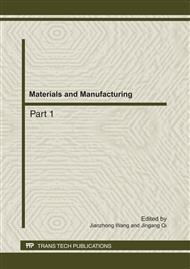p.1078
p.1083
p.1087
p.1091
p.1095
p.1099
p.1103
p.1107
p.1111
Study of Friction Stir Welding Technics and Weld Performance of Dissimilar 6063-3A21 Aluminum Alloys
Abstract:
Several rotating rates and welding speeds were chosen to joint 6063/3A21 dissimilar aluminum alloys, tensile strength of the welds were measured to analyze effect of welding parameters on weld performance. Results show that tensile strength of the weld is better than the base material. Weld tensile strength will decrease under a too high or too low welding speed while effect of rotating rate on weld strength is relatively small. The weakest position is at heat affected zone at 3A21 side after T6 post weld heat treatment.
Info:
Periodical:
Pages:
1095-1098
Citation:
Online since:
July 2011
Authors:
Keywords:
Price:
Сopyright:
© 2011 Trans Tech Publications Ltd. All Rights Reserved
Share:
Citation:


